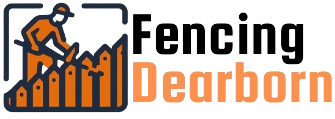The History of Dearborn, Michigan
Origins and Early Settlement
Dearborn traces its origins back to the late 18th century when the area was first settled by Europeans. The land was originally inhabited by the Potawatomi Indians for centuries prior.
First Non-Native Settlers
In 1786, the first non-Native American settler arrived – a French fur trader named Antoine Dequindre. He established a fur trading post on the Rouge River which runs through modern-day Dearborn.
Other French settlers followed soon after, slowly establishing farms and homesteads in the area. The early 19th century saw more American settlers from the East Coast migrate West and settle in Dearborn as well.
Early Village and Township
By 1833, the settlement had grown large enough that it formally established itself as a village named Bucklin Township after landowner Elijah Brush.
The village continued growing over the next few decades into a small frontier town and farming community. The Rouge River and surrounding forests provided ample resources for early settlers to build homes, farms, sawmills, and shops.
Dearborn As An Early Manufacturing Hub
By the late 19th century, Dearborn was evolving from a frontier town into an important manufacturing and transportation hub in the Detroit region thanks to two key industries:
Railroad and Automotive Manufacturing
Dearborn’s location along the railway lines connecting Detroit and Chicago as well as along the Rouge River made it the ideal place for factories.
Some key milestones:
- 1836: First rail tracks laid through Dearborn by Detroit & St. Joseph Railroad
- 1869: Michigan Central Railroad builds locomotive repair shops in Dearborn
- 1901: Ford Motor Company opens its first factory along the railroad tracks
- 1916: Ford’s giant River Rouge Complex opens, making Dearborn the Motor City’s industrial suburb
The Arsenal of Democracy
On the eve of World War II, Henry Ford agreed to let his auto factories spearhead mass production of airplanes and tanks for the war effort.
Dearborn earned its nickname “The Arsenal of Democracy” for its wartime manufacturing capabilities which helped the Allies win the war.
Dearborn’s Transformation Into a Modern City
The manufacturing boom in the early 20th century transformed the small town into a major city in its own right.
Population Boom
Dearborn’s population exploded from just over 4,500 in 1912 to over 50,000 by 1929 as people migrated for automotive jobs. During WWII, it ballooned to nearly 90,000.
New City Administration
With the population growth, Dearborn needed its own administration separate from the surrounding township. It officially incorporated as a city in 1927.
Orville Hubbard became the city’s long-running mayor from 1942-1978 and oversaw Dearborn’s growth.
Dearborn as a Diverse All-American City
Dearborn has grown into a diverse suburban city known for its auto heritage, educated workforce, and community spirit.
Thriving Economy and Community
Today over 95,000 people call Dearborn home. Key anchors like Ford Motor Company and other technology firms provide excellent jobs. The city has excellent public services, schools, and infrastructure that make it an attractive place to live and work.
Civic pride is strong with events like the Dearborn Homecoming festival, a celebration dating to the 1920s that honors community and veterans. Dearborn’s volunteer spirit earned it the “All-American City Award” multiple times.
Growing Ethnic Diversity
Dearborn welcomed waves of Arab immigrants in the 20th century to work in auto plants. Today nearly 50% of city residents trace their heritage to the Middle East. The large Arab-American community has earned Dearborn the nickname “Little Lebanon”.
Dearborn celebrates its diversity with cultural sites like the Arab American National Museum which chronicles Arab-American stories. The city also has one of America’s largest mosques, the Islamic Center of America.
Historical Timeline of Dearborn
Here is a historical timeline highlighting key events and milestones in Dearborn’s history:
| Year | Event |
|---|---|
| 1786 | First European settler Antoine Dequindre establishes fur trading post |
| 1833 | Settlement formally established as Bucklin Township village |
| 1836 | First railway laid through village |
| 1869 | Michigan Central Railroad builds major locomotive shops |
| 1901 | Ford Motor Company opens first factory |
| 1916 | Ford’s giant River Rouge complex opens |
| 1927 | Dearborn formally incorporates as a city |
| 1942-1978 | Orville Hubbard serves as mayor overseeing growth |
| 1929 | Population surpasses 50,000 people |
| 1947 | Ford River Rouge plant reaches peak employment of 100,000 workers |
| 1952-1959 | Dearborn named an “All-American City” for civic pride and volunteerism |
| 2005 | New Arab American National Museum opens |
So in summary, Dearborn has evolved from a small frontier town and farming community in the early 19th century into one of America’s iconic industrial cities, a role it maintains today alongside an increasingly diverse population. Throughout its history, community identity and civic participation have remained central to Dearborn.
The city pays homage to its past while embracing new waves of immigrants that call Dearborn home. This synergy of old and new is what defines this All-American City.
Check Our Blogs
No posts
Service Area
West Downtown, Dearborn (48126)
East Downtown, Dearborn (48124)
Dearborn Heights (48127)
South End, Dearborn (48126)
Fairlane, Dearborn (48126)
Dundee, Dearborn (48126)
Springwells, Dearborn
Fordson, Dearborn (48126)
Warrendale, Dearborn (48126)
Oxford Downtown, Dearborn (48124)
Military District, Dearborn (48126)
Stout District, Dearborn (48126)
Hours
Monday: 9:00 AM – 5:00 PM
Tuesday: 9:00 AM – 5:00 PM
Wednesday: 9:00 AM – 5:00 PM
Thursday: 9:00 AM – 5:00 PM
Friday: 9:00 AM – 5:00 PM
Saturday: 9:00 AM – 5:00 PM
Sunday: 9:00 AM – 5:00 PM
Contact Us.
Get Solutions For All Fencing Services
Every day from
9:00 — 5:00
Call to ask any question


